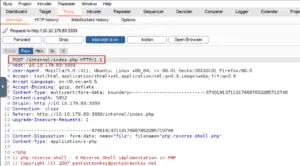
These options give us a lot of control over how the proxy operates, so it is an excellent idea to familiarize yourself with these.įor example, the proxy will not intercept server responses by default unless we explicitly ask it to on a per-request basis.

For example, we could take a previous HTTP request that has already been proxied to the target and send it to Repeater.įinally, there are also Proxy specific options, which we can view in the “Options” sub-tab. It is also possible to send the request to other tools in the framework by right-clicking them and choosing “Send to…”. When we have finished working with the Proxy, we can click the “Intercept is on” button to disable the Intercept, which will allow requests to pass through the proxy without being stopped. We can also do various other things here, such as sending the request to one of the other Burp modules, copying it as a cURL command, saving it to a file, and many others. We can then choose to forward or drop the request (potentially after editing it). At this point, the browser making the request will hang, and the request will appear in the Proxy tab giving us the view shown in the screenshot above. With the proxy active, a request was made to the TryHackMe website. Which Burp tool would we use if we wanted to bruteforce a login form? Which Burp Suite feature allows us to intercept requests between ourselves and the target?
#Burp suite repeater tryhackme walkthrough license
Whilst many of these extensions require a professional license to download and add in, there are still a fair number that can be integrated with Burp Community. The Burp Suite Extender module can quickly and easily load extensions into the framework, as well as providing a marketplace to download third-party modules (referred to as the “BApp Store”). These can be written in Java, Python or Ruby.

In addition to these features, it is very easy to write extensions to add functionality to Burp. If the algorithm is not generating secure random values, then this could open up some devastating avenues for attack. Sequencer: allows us to assess the randomness of tokens such as session cookie values or other supposedly random generated data.Comparer: allows us to compare two pieces of data at either word or byte level.Decoder: allows us to decode captured information, or encode a payload prior to sending it to the target.This is often used for bruteforce attacks or to fuzz endpoints.

#Burp suite repeater tryhackme walkthrough free
Part 3 (Features of Burp Suite Community)īurp Suite Community is free and therefore consists of less features than Burp’s premium products.


 0 kommentar(er)
0 kommentar(er)
